by Kristin Hashimoto on 1 May 208 in The Big Island Weekly
Former Austal employees allege the Hawai`i Superferry's Alakai is operating with manufacturing defects. They also warn that her sister ship, currently under construction, will have similar problems.
Austal is a 20-year-old Australian ship building company that is working on private and government marine vessel projects and Wayne Jenkins is a class-A welder who used to work for the company in Mobile, Alabama. He has been fired for being "disloyal to the company" after he voiced his concerns about these defects on Katy Rose's Hawai`i public radio talk show. Jenkins has a wife and young son.
While working on the boat, Jenkins noticed some of the work that was supposed to be done by the specially certified and tested class-A welders was being done by unqualified employees. "There was second class welders welding a butt weld. It's just two pieces of plate being joined together. Fitters that were fitting the stuff weren't certified to fit two pieces of plate together . . . ," said Jenkins.
When he was asked to make a wide half-inch weld to join two plates, Jenkins questioned his supervisor. He was told to keep welding.
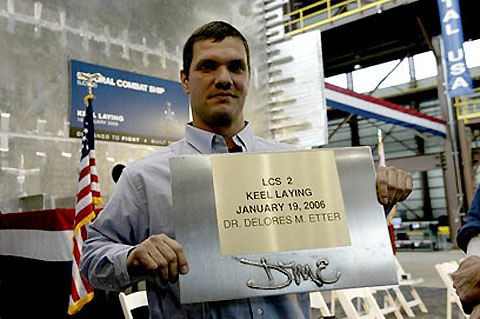
"I've seen a lot of stuff that's not been done right," said Jenkins in reference to construction of the latest addition to the Hawai`i Superferry (HSF) interisland fleet. According to Jenkins, a half-inch weld is too wide and can create welds that are structurally compromised.
Conversely, Bill Pfister, vice president of government programs at Austal said, "You can close in a half inch wide gap. That's a pretty wide gap, but you can do it."
On a ship that is completely comprised of aluminum metal plates and pieces, each weld contributes to the overall soundness of the ship.
In February, the Alakai was dry-docked for repairs. "When they (Austal employees) went over there (Hawai`i) to work on it, I was told what happened. I was told the welds broke, and it was running for a week while it was leaking," said Jenkins.
Pfister's, response to Jenkins allegations of unqualified welders working on more complex joints was " . . . No, that's just not so. That's the kind of allegations our competitor would use, or we would use on them. That's just bogus. The welders are all qualified. The ships are built in accordance with design and construction standards . . .," said Pfister.
While Jenkins did not work on the Alakai, he did work on the sister vessel and saw these welds for himself. "My concern is it can hold up to 850 people on there, if it's not structurally qualified . . . People's lives are more important than covering it up," said Jenkins.
"There's a fine line between someone who's got their own agenda and a whistleblower," said Pfister.
Jenkins was one of a small handful of nearly 1,100 employees at Austal that was a union member. The shipyard remains non-unionized. However, the Sheet Metal Union Chapter 441 has been trying hard to gain ground with the workers at the plant in Mobile. Their latest vote to unionize the yard, ended with workers voting 3-1 against the union.
This is not the first time Jenkins had been fired. The first time, he joined the local sheetmetal workers union, Chapter 441. Through their efforts, the National Labor Relations Board got him reinstated. However, this time, Jenkins won't go back to Austal even if the company asks him to return.
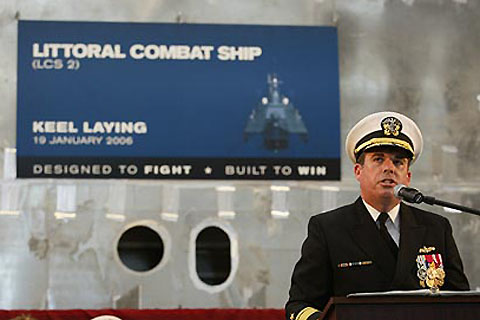
Regardless of the union agenda that Pfister alludes to, there are still real concerns about manufacturing errors. When asked about the Alakai's leaking rudder, Pfister replied, "It wasn't a design flaw, it was a manufacturing flaw."
"We sent a guy to take a look . . . maybe two months before they went into drydock. They (HSF) tried temporary repairs. A standard fix is using cement. The leak was near . . . high speed rudders . . . we took out the rudders and filled it with cement. Those kinds of temporary fixes are normal and safe," said Pfister.
Lt. John Titchen, information officer at the U.S. Coast Guard 14th District, related, "We cleared the boat." Inspectors and the Coast Guard believe the ship is safe.
Alakai has been awarded their certificate of inspection and passed their annual inspection. He also commented that there was nothing "noteworthy about the temporary repairs."
An inspection can last one to two hours or span eight to 10 hours. Inspectors ripped away insulation in the ship and examined welds. They used various tests such as the dye penetrant test to evaluate the viability of seals. Inspectors examined inserts, rudder, hull, among other things, and deemed the ship and its repairs, "satisfactory." Nine different inspectors, a marine engineer, and a class society director in addition to members of the Coast Guard all
walked the ship and found nothing amiss.
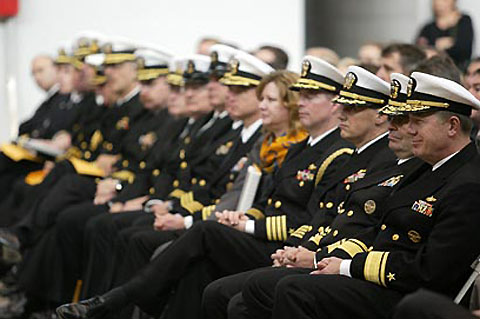
However, the rudder repair affected rideability, making the ship's ride rougher than normal. The ship also consumed 5 percent more fuel as a result of not having the rudders to steer the ship at high speeds. It was a costly repair in more ways than one. "Things that they discover within the first year is our nickel. That's the warranty," said Pfister.
The allegations Jenkins made are similar to findings in corrective action reports filed by the Navy from May 2005 to May 2007 on another vessel manufactured by Austal at the same shipyard. In August 2007 an article by Sean Reilly for the Newhouse News Service reported that the Navy had concerns about Austal's work on a Littoral Combat Ship. Some of the concerns the Navy listed were botched welds and employees doing work for which they were not qualified. Reilly obtained
these government records under the federal Freedom of Information Act.
Austal's own inspector found problems with the vessels during manufacturing. Teresa Hart is a certified level two inspector specializing in ultrasonics, magnetic particle and liquid penetrants. She is qualified to conduct visual inspections and to supervise welding, and was hired by Austal to provide quality assurance even though there was no department handling that facet of the manufacturing process. "Even when they were trying to hire me, they told me they
didn't want a quality assurance department or manager," Hart said.
While onsite in Mobile as the Alakai was under construction, Hart noticed problems with some of that ship's welds. They "just weren't right," she said. ". . . there were welds missing, that's a pretty big deal and I thought, well, surely they'll bring somebody in and they'll catch it. It's never normal to miss a weld." Hart told a supervisor about them at the time but was told that her work was restricted to another ship.
While the ships didn't have a lot of quality assurance people eyeing each process and weld, Hart explained that Austal used x-rays to insure the structural integrity of the joinery. Still, Hart was concerned. As her clamors about quality control grew louder, she was terminated in March 2007, five months after she was first brought onboard. Reason? "They told me I wasn't a team player."
Aside from the problems with Austal's shipbuilding, Wayne Jenkins also weighed in on the working conditions. "I've been in some holes (of the ship) that's been pretty filled with smoke and dust and they brought no kind of fan to help assist the process," he said.
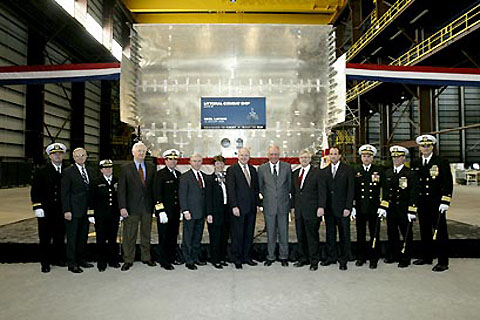
Workers are provided with respirators. Still Carolyn Slay, another fired employee, reported, "When I go home and blow my nose, all that comes out is black from the ash." Slay said her skin also breaks out in rashes and complained that the work environment was unfriendly to black employees. She reported that she saw nooses hanging in the workers area, and the "n-word was scribbled on the walls." Slay also claimed that pay scales were unequal for
women and men, and black employees versus Caucasian workers.
Slay confirmed that unqualified welders, worked on welds at the Austal shipyard.
While Austal experiences its own employee turnovers, HSF is doing its own shuffling. On Monday HSF appointed Admiral Tom Fargo to take the helm as new President and Chief Executive Officer. John Garibaldi is now Vice Chairman and will continue to serve on the board of directors for the company.
HSF currently makes one voyage daily from O`ahu to Maui and from Maui to O`ahu. Beginning May 9, a second voyage will be added four days a week operating on Sundays, Mondays, Wednesdays and Fridays.
|
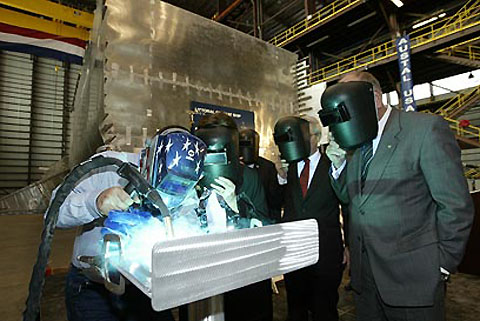
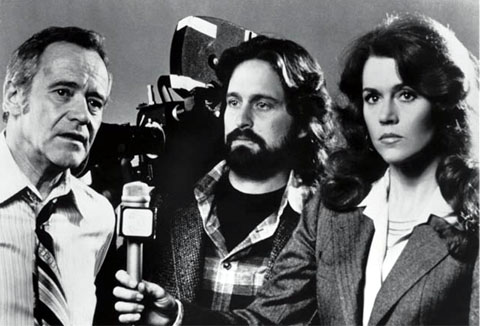
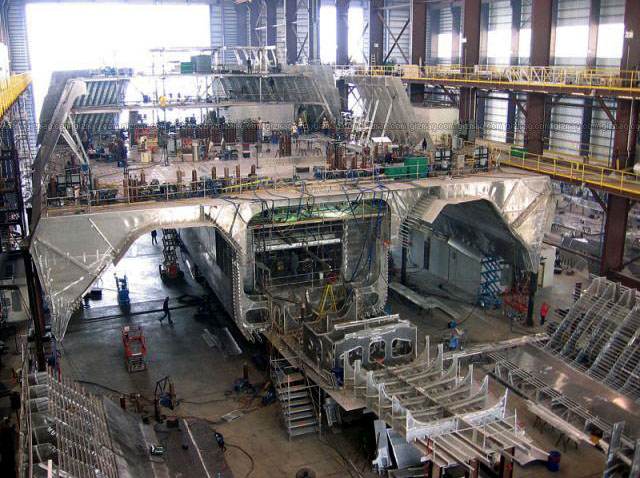
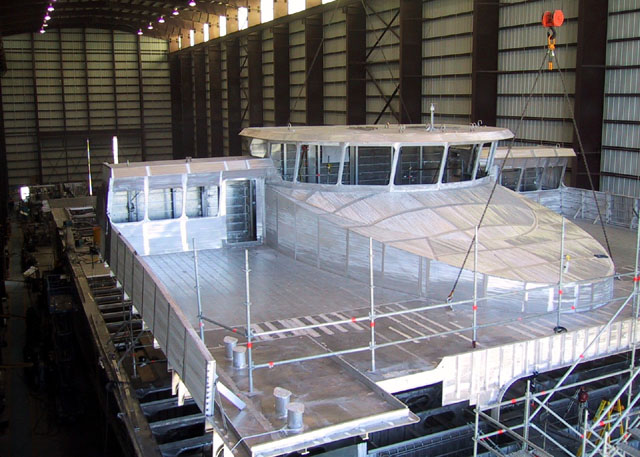




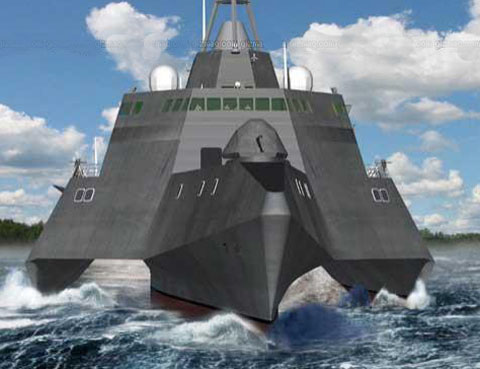 image above: Computer generated rendering of Austal's LCS now under construction
image above: Computer generated rendering of Austal's LCS now under construction